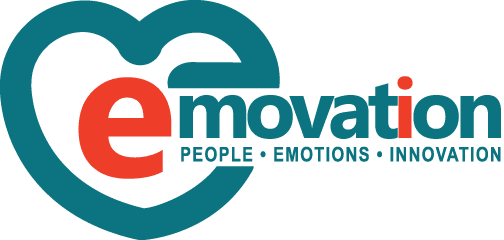Due to the COVID-19 pandemic triggering the massive rise of remote work, modern workplaces have transformed into melting pots, bringing together people from varying backgrounds.
While diversity is beautiful in professional environments, the lack of it can prove mentally challenging to those who feel out of place. This can even impede workforce performance, which ultimately impacts organizational success.
A study by McKinsey, in fact, found companies in the top quartile with regards to ethnic representation can increase their likelihood of outperforming those in the bottom quartile by 39%!
Although mental health and diversity can be swept under the rug in traditional work settings, recognizing the connection between the two lets you cultivate a more respectful and supportive workplace. To help you better understand these subjects, we’ll walk you through their intricacies.
The connection between mental health and diversity
Employee experiences can be influenced by their backgrounds, all of which shape their well-being and performance. So, to start, we’ll tackle some common challenges associated with diversity and their effects.
Challenges tied to diversity
Diversity can strongly impact a workplace, as your employee behaviors can vary due to biases. These, meanwhile, can arise due to differences in appearance, nationality, education, and experience, ultimately leading to certain issues like:
Lack of representation
This refers to the scarce presence or visibility of specific minorities or marginalized groups in your company. Having a minimal number in your workforce can make employees from such demographics feel isolated and undervalued.
Unconscious bias
This refers to a prejudice or stereotype around certain groups of people that one is unaware of having. Unconscious biases are typically influenced by one’s upbringing and childhood experiences, ultimately impacting how they treat those they consider different as they get older.
Having this in the workplace, meanwhile, can create barriers to promotion, collaboration, and even basic respect—this can easily trigger employee frustrations and cause them to disengage.
Passive-aggressiveness
Passive-aggressive behavior—whether through dismissive remarks or microaggressions—can wear down relationships and morale, as well as give rise to workplace conflict and toxicity.
Such acts may seem minor at first, but the accumulation of their effects can erode your employees’ mental well-being.
Isolation
A lack of workplace diversity can severely limit the access minority or marginalized groups have to support networks. This can create a feeling of alienation, which eventually destroys their sense of belonging.
Impacts of these challenges on mental health
The above issues, meanwhile, can have the following effects on your employees’ mental well-being.
Fear for their own safety
For employees from marginalized backgrounds, being targets of microaggressions can instill a real sense of fear, as they’ll feel like they don’t belong and see the workplace as unsafe.
This can significantly deter their ability to thrive and collaborate, as their relationships with some coworkers will be hostile.
Anxiety
Constantly worrying about issues with acceptance, discrimination, bias, and safety can easily lead to heightened anxiety. This lingering effect can gnaw at everything from daily performance to long-term career aspirations.
Depression
The negative impacts of feeling overlooked, isolated, or unfairly treated can result in depressive symptoms like a loss in motivation, reduced productivity, and absenteeism. When left unchecked, it may even result in turnover!
Creating an inclusive and supportive work environment
To alleviate the impacts of the aforementioned challenges, leaders should focus on fostering an inclusive culture. Some key steps you can take include:
Educate your employees
Providing training on mental health and diversity can help employees understand the struggles their colleagues face. Doing this fosters a more empathetic and informed workplace as well.
Encourage open communication
Meaningful discussions allow employees from minorities or marginalized groups to share their workplace challenges. They’re great for exchanging ideas as well.
By creating spaces for open dialogue, you establish platforms that instill a sense of safety. So, make sure to encourage regular feedback sessions, whether they be one-on-one or team-based.
Provide a voice for the minority
Underrepresented employees may shy away from the spotlight, especially when they feel out of place or alienated. To ensure they’re given ample opportunities, encourage them to contribute, lead, and openly ask for their input.
By actively seeking out and elevating their insights, you not only instill confidence, but also foster a sense of inclusion and value.
Implement policies that support mental health and diversity
Draft policies that explicitly support mental health initiatives and diversity goals, such as anti-discrimination and mental health days. This demonstrates leadership’s strong commitment to workplace well-being and shows employees that they are valued.
Set an example
Leaders set the tone for inclusivity, so make an effort to promote it. When you model inclusive behavior and make diversity a part of your leadership style, it reinforces the importance of establishing a supportive culture for all employees.
Practical steps for employers
Creating a mentally healthy workplace that strongly supports diversity requires practical and sustainable actions. To create a healthier and more inclusive environment, here are some strategies you should consider:
Provide mental health resources
One of the best ways to maintain the mental well-being of your employees is to give them access to the right care. Employee assistance programs (EAPs), for instance, offer confidential counseling and support for those dealing with personal or professional stress.
Emovation’s ElevateMinds programs, meanwhile, are meticulously crafted to nurture the entire individual, accounting for various elements that contribute to mental wellness. They help build more resilient workforces, addressing aspects of mental well-being such as:
- Anxiety and stress management
- Psychological safety
- Emotion regulation
Through ElevateMinds, employees can readily approach mental health professionals as well, as they’ll have easy access to:
- Counseling
- Psychotherapy
- Psychiatric consultations
Offer mental health and diversity training
Training built around mental health and diversity issues can tackle stigmas and teach employees how to interact with awareness and empathy. Such initiatives, meanwhile, can range from interactive workshops, to scenario-based learning, even to role-playing exercises.
Cultivate emotional intelligence (EI)
An understanding and supportive culture is key to promoting your workforce’s mental well-being. Our EI training, meanwhile, develops empathy, a vital competency that lets people place themselves in others’ shoes—this is key to understanding colleagues from different walks of life.
In an emotionally intelligent workplace, employees from minorities or marginalized groups can safely and openly express their concerns, while leaders regularly check in to provide the necessary support.
Tackle stigmas and promote psychological safety
As mentioned earlier, policies that protect against discrimination, provide mental health support, and encourage transparency are key to fostering psychological safety.
Managers should clearly communicate these policies, as well as educate their personnel about the reasoning behind them. The goal is to break down stigmas and create a psychologically safe environment. This can only be achieved through consistent and unbiased behaviors.
Celebrate diversity
Diversity-focused events provide employees opportunities to learn about different cultures and perspectives, therefore honoring the uniqueness each individual brings.
For example, by celebrating a certain group’s traditional holiday, you cultivate awareness about their heritage and give workers the chance to get to know their colleagues better. You can even host diversity panels that offer minorities and marginalized groups a platform to educate others.
Wrapping up—Create a mentally healthy workplace by supporting diversity
Creating a workplace where everyone feels safe, seen, and supported is more than just an added benefit—it’s essential for your workforce’s well-being and, ultimately, your business’s success.
By recognizing the unique challenges employees from diverse backgrounds face, then taking steps to promote inclusivity and mental health, you can build a workplace that truly values each individual.
On the other hand, if you want to learn more about how we can help you build a more diverse and mentally healthy workplace, don’t hesitate to reach out!






Leave A Comment